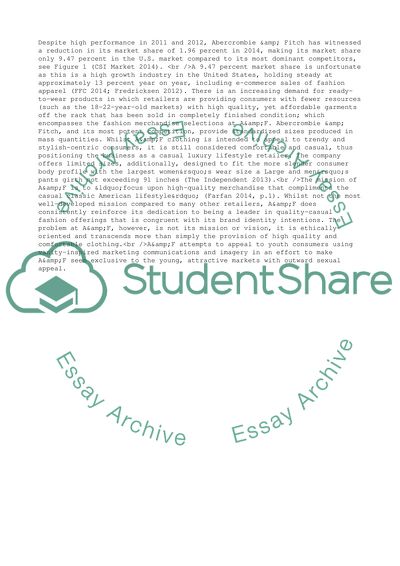Cite this document
(Business Strategy Report: Abercrombie & Fitch Report Example | Topics and Well Written Essays - 3000 words, n.d.)
Business Strategy Report: Abercrombie & Fitch Report Example | Topics and Well Written Essays - 3000 words. https://studentshare.org/business/1849563-business-strategy-report
Business Strategy Report: Abercrombie & Fitch Report Example | Topics and Well Written Essays - 3000 words. https://studentshare.org/business/1849563-business-strategy-report
(Business Strategy Report: Abercrombie & Fitch Report Example | Topics and Well Written Essays - 3000 Words)
Business Strategy Report: Abercrombie & Fitch Report Example | Topics and Well Written Essays - 3000 Words. https://studentshare.org/business/1849563-business-strategy-report.
Business Strategy Report: Abercrombie & Fitch Report Example | Topics and Well Written Essays - 3000 Words. https://studentshare.org/business/1849563-business-strategy-report.
“Business Strategy Report: Abercrombie & Fitch Report Example | Topics and Well Written Essays - 3000 Words”. https://studentshare.org/business/1849563-business-strategy-report.


